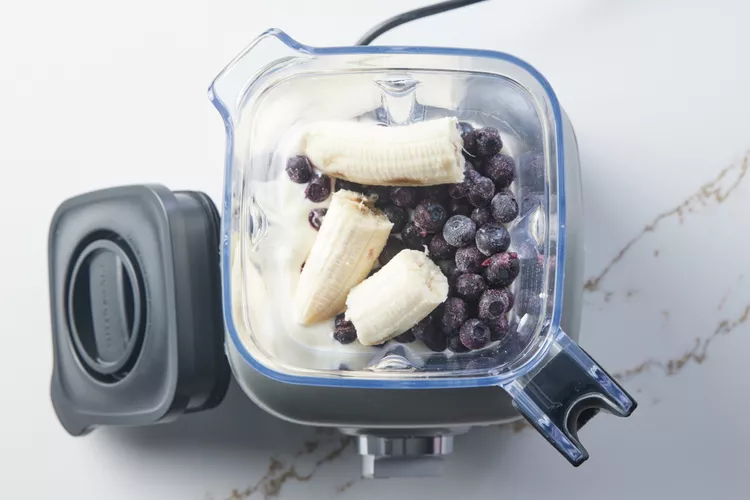Blenders are a staple in many kitchens, cherished for their versatility and convenience. But have you ever wondered why do blenders have multiple speeds? Understanding how these speeds enhance the functionality of your blender can transform your cooking experience. Let’s delve into the reasons behind the various speed settings and how they cater to different culinary needs.

The Evolution of Blenders
The journey of blenders began in the early 20th century. Initially, these appliances had a single speed, primarily used for basic mixing and blending tasks. As culinary techniques evolved, so did the demand for more sophisticated kitchen tools. This led to the development of blenders with multiple speeds, allowing for greater precision and versatility in food preparation.
Understanding Blender Speeds
When you look at a modern blender, you’ll notice an array of speed options. These are designed to cater to different textures and consistencies required in recipes. The ability to adjust speeds provides control over the blending process, ensuring the desired outcome for each dish.
Benefits of Multiple Speed Settings
Precision and Control
Having multiple speed settings allows users to have precise control over their blending tasks. Whether you need to gently mix a sauce or pulverize ice for a smoothie, the right speed setting makes all the difference.
Versatility in Food Preparation
Blenders with multiple speeds can undertake a variety of kitchen tasks. From making creamy soups to preparing chunky salsas, these appliances can handle diverse recipes with ease. For example, when making a Greek casserole, using different speeds can help blend ingredients to the ideal consistency.
Improved Texture and Consistency
Different recipes require different textures. A low speed is perfect for a coarse chop, while a high speed can create smooth, velvety textures. This flexibility is crucial for achieving the right consistency in dishes like mac and cheese casseroles or exquisite soups.
Common Speed Settings and Their Uses
Low Speed
Ideal for gentle mixing and stirring, low speed is perfect for combining ingredients without over-processing them. It’s great for delicate tasks like blending soft fruits or creating light batters.
Medium Speed
This setting is versatile, offering a balance between low and high speeds. Use it for tasks like pureeing vegetables for soups or making smoothies with softer ingredients.
High Speed
High speed is used for more robust tasks, such as crushing ice or pulverizing nuts into butter. It’s essential for achieving fine, smooth textures quickly.
Choosing the Right Blender
When selecting a blender, consider the types of recipes you frequently prepare. If you enjoy making a wide range of dishes, a blender with multiple speeds is likely the best choice. Brands like Vitamix and Ninja offer models with a variety of speed settings to suit all cooking needs. Additionally, knowing when to use a stand or immersion blender can further enhance your culinary adventures.
Maintaining Your Blender
To ensure your blender continues to perform efficiently, regular maintenance is key. Clean the blades and jars thoroughly after each use. Periodically check the motor and speed controls for any signs of wear and tear. Proper care will extend the life of your appliance and maintain its performance.
Incorporating Blenders into Everyday Cooking
Blenders are more than just smoothie makers. With their multiple speeds, they can be used in daily cooking to prepare diverse dishes. For instance, when making an Asian-inspired casserole, a blender can help you quickly mix sauces and chop ingredients to perfection.
Optimizing Blender Use for Healthier Cooking
Using a blender with multiple speeds can contribute to healthier cooking. By controlling the texture and consistency of your food, you can reduce the need for added fats and sugars. This is particularly beneficial for making healthy soups, sauces, and even desserts.
Conclusion
Understanding why blenders have multiple speeds opens up a world of culinary possibilities. From enhancing the texture and consistency of dishes to offering precision control over blending tasks, these appliances are invaluable in modern kitchens. By choosing the right blender and utilizing its full range of speeds, you can elevate your cooking and enjoy a wide array of delicious meals.

FAQ
What is the purpose of multiple speeds on a blender?
Multiple speeds allow for greater control over the texture and consistency of blended foods, catering to different culinary needs.
How do I choose the right speed setting?
Consider the desired texture of your dish. Use low speeds for gentle mixing and high speeds for tasks like crushing ice or making smooth purees.
Can using the wrong speed damage my blender?
Using an inappropriate speed for a specific task can strain the motor. It’s important to follow the manufacturer’s guidelines to ensure optimal performance.
This article contains affiliate links. We may earn a commission at no extra cost to you.

